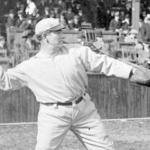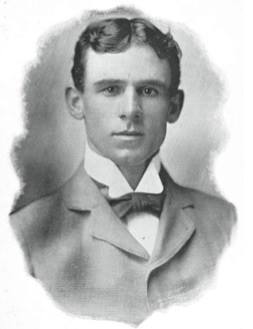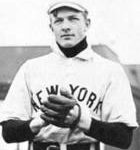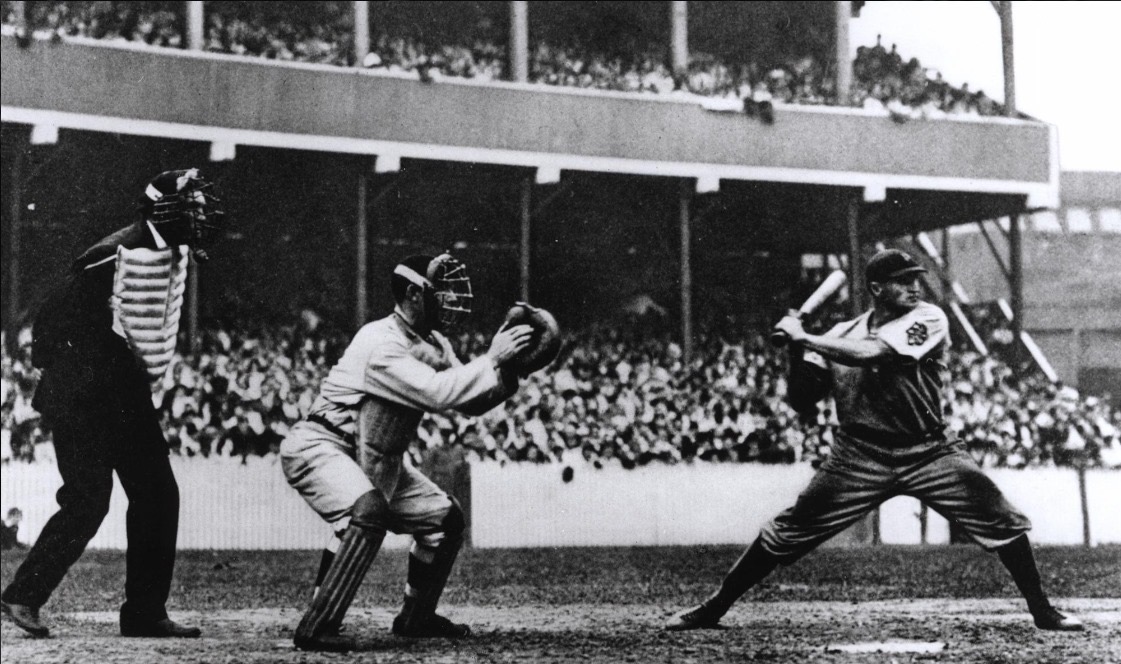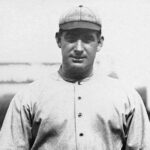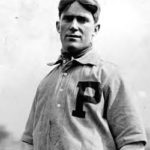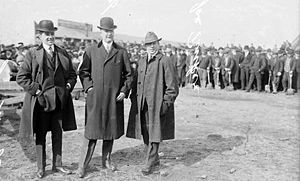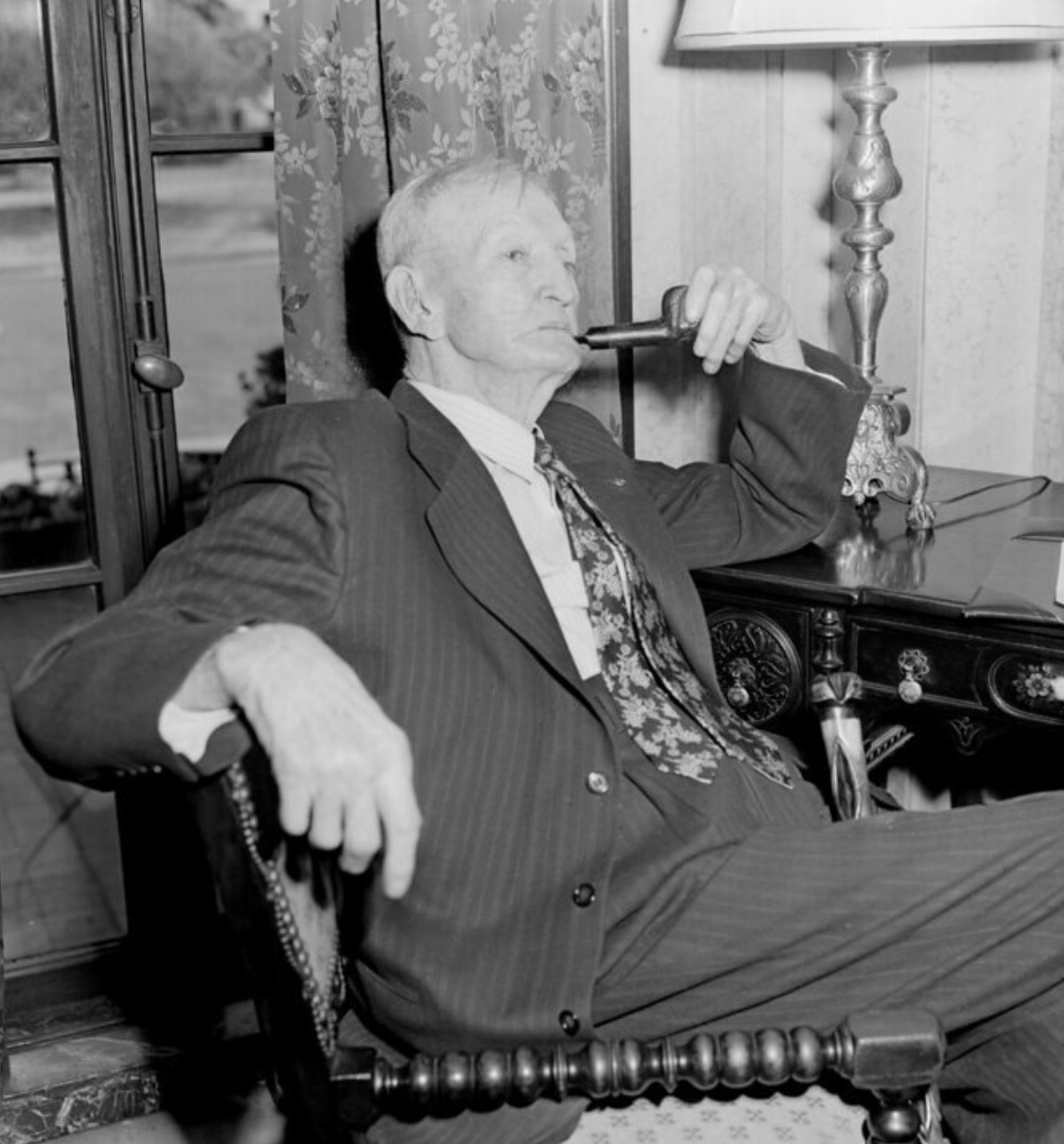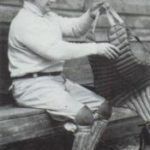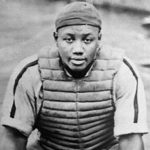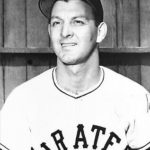Roger Bresnahan Essentials
Positions: Catcher
Bats: Right Throws: Right
Height: 5′-9″ Weight: 200
Born: June 11, 1879 in Toledo, OH USA
Died: December 4, 1944 in Toledo, OH USA
Buried: Calvary Cemetery, Toledo, OH
High School: Central HS (Toledo, OH)
Debut: August 27, 1897 vs. STL 2 AB, 1 H, 0 HR, 0 RBI, 0 SB
Last Game: October 3, 1915 vs. STL 2 AB, 1 H, 0 HR, 0 RBI, 0 SB
Hall of Fame: Inducted as a Player in 1945 by Old Timers
Full Name: Roger Philip Bresnahan
Hall of Fame: Inducted as Player in 1945. (Voted by Old Timers Committee)
No induction ceremony in Cooperstown held (until 2013).
Nicknames: The Duke Of Tralee
Played For
Washington Senators (1897)
Chicago Cubs (1900)
New York Giants (1902-1908)
St. Louis Cardinals (1909-1912)
Chicago Cubs (1913-1915)
Managed
St. Louis Cardinals (1909-1912)
Chicago Cubs (1915)
Post-Season Appearances
1905 World Series
Minor League Experience
1898: Toledo (Inter-State League)
1899: Minneapolis (Western League)
1916-1918: Toledo (American Association)
Nine Players Who Debuted in 1897
Roger Bresnahan
Honus Wagner
Rube Waddell
Chick Stahl
Jimmy Sheckard
Jack Dunn
Ed Abbaticchio
Tully Sparks
Bill Magee
The Roger Bresnahan Teammate Team
C: Ivey Wingo
1B: Ed Konetchy
2B: Larry Doyle
3B: Art Devlin
SS: Bill Dahlen
LF: Mike Donlin
CF: Cy Seymour
RF: Cy Williams
SP: Christy Mathewson
SP: Joe McGinnity
SP: Harry Howell
SP: Hippo Vaughn
RP: Vic Willis
M: John McGraw
Notable Events and Chronology for Roger Bresnahan Career
Bresnahan was one of several players who became a close friend of John McGraw. With Christy Mathewson, another friend, it was an attraction of opposites. Roger could have been McGraw’s twin: compact, pugnacious, fiercely concentrated on the game, and skilled in all the ways it takes to play it. Temperamental like his manager, he was an unabashed Irish brawler, tough on teammates who did less than their best, tough on opponents, toughest on umpires, whom he baited and bedeviled. He was frequently ejected, fined and suspended, gave headaches to League officials, and engaged in noisy confrontations with at least three club owners. He could play any position on the field.
Washington had him first as an 18-year-old pitcher who shut out the Browns, 3-0, on six hits in his major-league debut. His repertoire was dazzling. The papers credited him with “a speedy shoot, outcurve, inshoot, drop ball.” Roger won three more games that season, but the Senators let him go the next spring when he insisted on more money than they would pay. The Cubs brought him up after two years in the high minors, played him for two innings, and lost him to McGraw’s Orioles in 1901. Rapped hard in two outings, he was tried at second, third, the outfield, and when Wilbert Robinson was hurt, behind the plate. He played well wherever they put him, but catching was his forte. When McGraw departed the American League for the Giants at mid-year, Bresnahan made the leap with him. The Giants had Jack Warner and Frank Bowerman as their catchers, so Roger became the centerfielder. The season was a romp. Despite his hefty build, he was fast and agile enough not only to cover the outfield expanse, but to bat leadoff. He played 116 games, got 142 hits and batted a handsome .350, his career high and a mere .005 behind Honus Wagner.
By 1905 Bresnahan was the Giants’ first-string catcher. Some say Mathewson urged McGraw to make the move, although Mac had known Roger’s capabilities for years and could have figured it for himself, particularly now that he had acquired Turkey Mike Donlin for the outfield. Roger had another good year, hitting .302 and catching 87 games. He caught all five World Series games against the Athletics, which meant Matty’s three shutouts, Joe McGinnity’s one, and Joe’s shutout loss to Chief Bender. He also hit a sparkling .313.
Perhaps his most notable contributions to the game were in protective equipment. In 1905, after being hospitalized for a head injury from a beaning, he experimented with a batting helmet manufactured by the A.J. Reach Company. It was like the leather football helmet of the period sliced vertically: one half for covering the left side of a righthanded batter’s head, the other for the lefty hitter. Although beanballs were frequent, the idea did not find favor. Two years later he devised catcher’s shin guards. The first ones, evidently modeled after a cricketer’s leg pads, were large and bulky, with a knee flap that came up to the thigh. They were greeted with ridicule and protest, but soon caught on. By 1909 they had more utilitarian shape and size, and were in general use. About 1908 he improved the flimsy wire catcher’s mask with leather-bound rolls of padding to absorb the shock of foul-tips.
In winter that year, McGraw traded his friend to St. Louis. Roger had caught 139 games during the season, but he was 29 and slowing down. McGraw could afford to let him go. He had the young Chief Meyers on deck and the Cardinals eager to make a deal. Long a lackluster club and a cellar-dweller for two years, its owners thought a manager like the fiery Duke of Tralee might energize the players. To get him they gave up three of their few talents: Red Murray, a first-rate outfielder, Bugs Raymond, an eccentric but effective pitcher, and an experienced backup catcher, Admiral Schlei, acquired from Cincinnati.
Manager Bresnahan acquired some good players and got them above .500 and in fifth place by 1911. The Cardinals’ owner, Mrs. Schuyler Britton, who had recently inherited the club on the death of her uncle, Stanley Robison, was pleased with the improvement and rewarded Roger with a five-year contract at $10,000 per year, plus a percentage of the profits, if any. During the disappointing sixth-place season of 1912, however, Mrs. Britton, like owners before and since, second-guessed her manager publicly. Roger blistered her ears with some choice dugout repartee and was fired forthwith. Roger demanded to be paid as manager and player for the remaining four years of his contract. The Cardinals, unable to clear waivers for a trade, finally sold him to the Cubs. He backstopped Jimmy Archer in 1913, managed Chicago to a fourth-place finish in 1915, all the while continuing his contract fight with the Cardinals. He finally won a $20,000 settlement. His playing career ended in 1916. He was owner-manager of his hometown Toledo Mud Hens through 1923, then coached the Giants (1925-28) and Tigers (1930- 31).
@ET-DC@eyJkeW5hbWljIjp0cnVlLCJjb250ZW50IjoicG9zdF90YWdzIiwic2V0dGluZ3MiOnsiYmVmb3JlIjoiTGVhcm4gTW9yZSBhYm91dCB0aGUgdGVhbXMsIHBsYXllcnMsIGJhbGwgcGFya3MgYW5kIGV2ZW50cyB0aGF0IGhhcHBlbmVkIG9uIHRoaXMgZGF0ZSBpbiBoaXN0b3J5IC0gLSAtIC0gLSAtIC0gIiwiYWZ0ZXIiOiIiLCJsaW5rX3RvX3Rlcm1fcGFnZSI6Im9uIiwic2VwYXJhdG9yIjoiIHwgIiwiY2F0ZWdvcnlfdHlwZSI6InBvc3RfdGFnIn19@
Factoids, Quotes, Milestones and Odd Facts
Roger Bresnahan was the player both John McGraw and Branch Rickey considered the finest catcher they ever saw. Bresnahan was a good hitter who filled in at several positions for the New York Giants and St. Louis Cardinals, also managing at the major league level. He had good enough speed that he was used as a leadoff hitter, and he hit .279 with more than 200 steals during his 17-year career. His development of catching techniques and the use of equipment were revolutionary.
Best Season: 1903
Bresnahan, like many players who caught in the early 1900s, played on a semi-regular basis. The difference with Bresnahan was that he could hit well enough to earn a spot in other locations. He played 254 games in the outfield in his career, 41 at third, 33 at second, and 28 at second base. He caught 958 games, with more than 93 in a single season just once (139 in 1908 with McGraw’s Giants). In ’03 Bresnahan played 84 games in the outfield, and various games at other positions for a total of 113. He batted .350 – fourth in the league – with a fine .443 OBP and .493 SLG – both in the NL’s top five. He also finished in the top ten in runs, walks, and steals. In 1908, he caught 139 games – a rare feat for catchers of that era. Soon he was developing techniques unseen in baseball, such as the snap throw to first base, the slide step to block the plate, and the use of shin guards. Thes facts, as much as anything he did on the diamond, helped him get into the Hall of Fame. He was elected following his death in 1944, largely due to Rickey’s influence.
How Bresnahan Became a Catcher
When catcher Roger Bresnahan first walked on the field in 1906 with cricket shin guards strapped to his legs, he took razzing from players on the opposing team, but the equipment helped protect him from errant pitches, and before long nearly every receiver in the game was wearing them.
Bresnahan was an innovator in many ways. In 1905, after he suffered a serious beaning that left him unconscious, Bresnahan experimented with a protective batting helmet that he fashioned after football headgear. He was also credited with adding padding to the catcher’s mask to make it more comfortable. Yet Bresnahan was not always a catcher. He debuted as a pitcher, but an incident with John McGraw’s Baltimore Orioles in 1901 launched his catching career.
Warming up on the sidelines under the watchful eye of McGraw, who became his best friend in baseball, Bresnahan grew frustrated as the team’s second-string catcher had problems handling his deliveries. “Why don’t you get us a catcher?” he asked. “If you’re so smart, get in there and catch yourself,” McGraw growled at him. Bresnahan accepted the challenge, caught Joe McGinnity’s complete game victory that day, and soon he was the team’s primary catcher.
In an era when most catchers were coveted for their gloves, Bresnahan was a valuable offensive player as well. For several seasons he was McGraw’s leadoff man, a role he filled well in the 1905 World Series, when he led all batters with a .312 average, and added four walks and a stolen base in five games. Bresnahan was adept at reaching base, finishing among the top ten in on-base percentage seven times. He finished his 17- year career as a .279 hitter with 211 stolen bases.
Where He Played
Bresnahan was a valuable role player, catching 974 games, but also playing all three outfield positions, third base, first base, second, and short. He even pitched in nine games, posting a 4-1 record with a 3.93 ERA. He wasn’t settled into the catcher’s role until he was 26 years old and in his seventh big league season.
As a Manager
Bresnahan had a .432 winning record (328-432). His best season was 1911, when the Cardinals were fifth, at 75-74.
Born
Roger Philip Bresnahan was born on June 11, 1879, in Toledo, OH.
Died
December 4, 1944, Toledo, OH
Batted: Right
Threw: Right
Major League Debut
8 27,
Nine Other Players Who Debuted in 1897
Coming soon…
Nicknames
The Duke Of Tralee
“The Duke of Tralee” refers to Tralee, Ireland, where Bresnahan’s ancestors were from.
Similar Players
Lyn Lary, Jose Offerman
Related Players
John McGraw considered Bresnahan to be one of the best players he ever managed, and one of the smartest as well.
Transactions
Before 1901 Season: Jumped from the Chicago Orphans to the Baltimore Orioles; Before 1902 Season: Jumped from the Baltimore Orioles to the New York Giants; December 12, 1908: Traded by the New York Giants to the St. Louis Cardinals for Admiral Schlei, Bugs Raymond, and Red Murray; June 8, 1913: Purchased by the Chicago Cubs from the St. Louis Cardinals.
Replaced
Too difficult to say. Bresnahan didn’t really have a clearly defined moment where he became a starter. McGraw used him as a role player for several years.
Replaced By
Jimmy Archer, the veteran backstop from Ireland, assumed duties as the Cubs’ catcher in 1915-1916, as Bresnahan called it quits.
Best Strength as a Player
Versatility, and his speed.
Largest Weakness as a Player
None
Other Resources & Links
View Roger Bresnahan’s Page at the Baseball Hall of Fame (plaque, photos, videos).
View Player Bio from the SABR BioProject
If you would like to add a link or add information for player pages, please contact us here.


